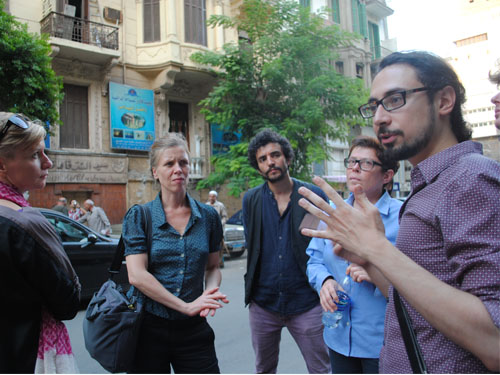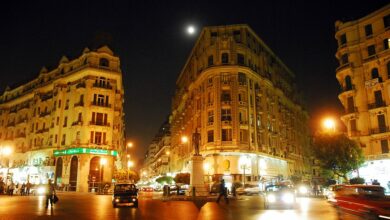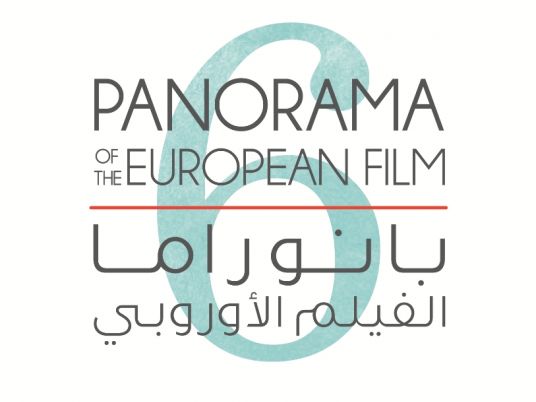
Even for those who have never set foot in downtown Cairo, it seems familiar, especially after images of Tahrir Square and its stenciled side streets have made it to most news channels over the past year and a half. So, when the TransDance2012 festival invited the public to take part in a performative walk at the city center, we expected something different, a leeway into seeing the streets without all the baggage news reports force onto us.
And “Cairo Skirtings” indeed promised more. We were told we’d explore the unspoken history of the city held in downtown’s buildings and architecture, and engage with it.
So we showed up at the Goethe Institute in Cairo — the starting point for the stroll. As we walked out the gate, we stopped by a manhole, where Adham Hafez and Bettina Vissman, who were guiding us, asked what we thought this was and when it might have been built. The various respondents agreed that it dated back to Khedival Cairo.
Then we stopped by the Mohamed Ali Club, now the Egyptian Diplomats Club, and were told a story about how a contemporary dancer promised to belly dance on the sidewalk by its entrance for a friend’s wedding, but was asked by the management to go inside. Then came a walled church, about which the guides told us that this was because of the rising sectarian tensions over the past few decades.
The personal stories of the city can be an interesting way to lure people in, and some recent initiatives like The Alexandria Streets Project have been experimenting with that. But in this case, the narratives were neither personal nor formal often ignoring the history of the very places they sought to mediate.
Egyptian architect Samir al-Kordy was meant to lead the tour with Vissman, but decided to wait and hear about what happened before proposing how he could contribute. So Hafez filled in.
But perhaps Kordy was wise, as the most disappointing part of the “performative walk” was not the purposeful drifting, which is usually fun, but the way a particular “context” was forced onto everything. It seemed like a guided tour, ghetto tourism rather than an opportunity to engage with the routes we’ve watched on news channels or have trodden so much on a daily basis, on our way to work, to grab a bite, meet a friend or see a show.
As we walked, we were also asked to snap photos with our mobile phones of scenes we found “problematic.” The walkers commented on the likes of uncovered wires coming out of street lamps; and Hafez explained that people at times light their homes through these lampposts. In this case, however, they weren’t. The wires were sticking out and connected to the next street lamp, while being pinned to a balcony from the middle as support.
“Cairo Skirtings” seemed to thus defy the very purpose of performative walks, a deliberate kind of wandering and openness to the city. And this feeling was further reinforced when we were told we’d end up at the famous Lehnert & Landrock photography store on Sherif Street to see old photos of the city.
Some of the walkers, however, did enjoy it, especially those who were visiting the city for the first time as everything seemed “different.” Others were disappointed because they were expecting a public performance of the fantastic type. For me, the disappointment was for different reasons, although the “Cairo Skirtings” did encourage me to take more strolls in the city only with possibly one companion and definitely without guidance.




